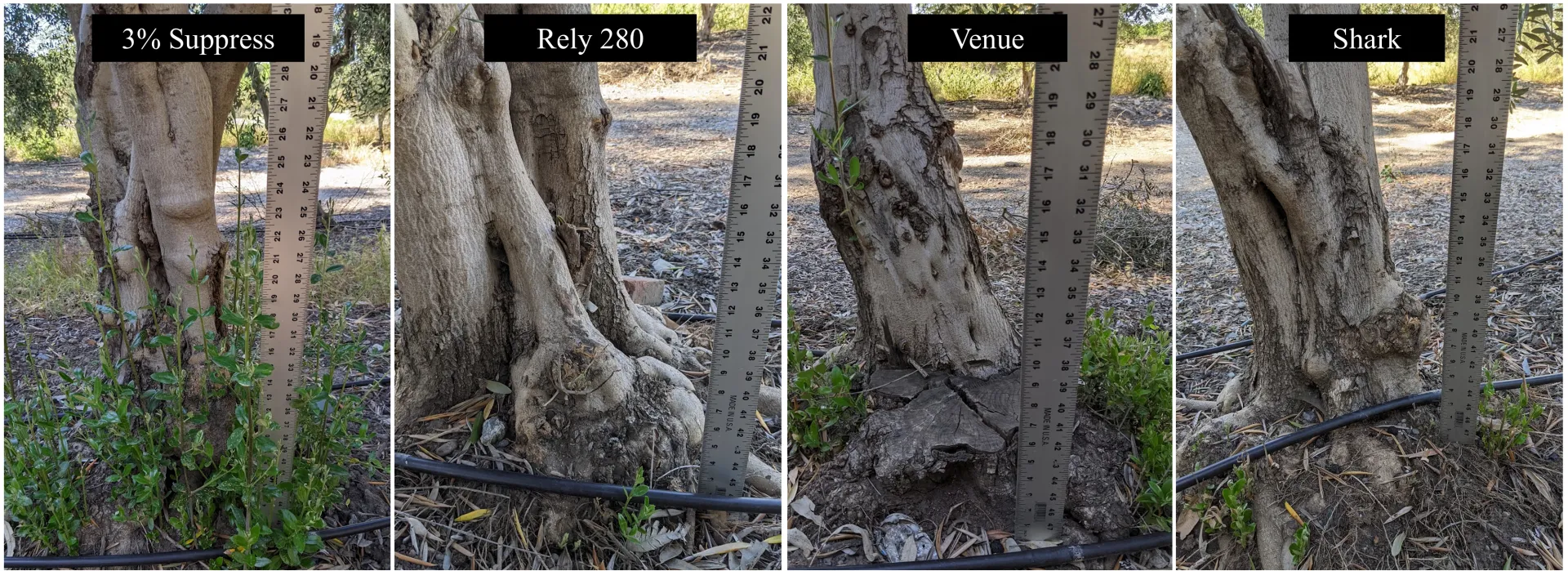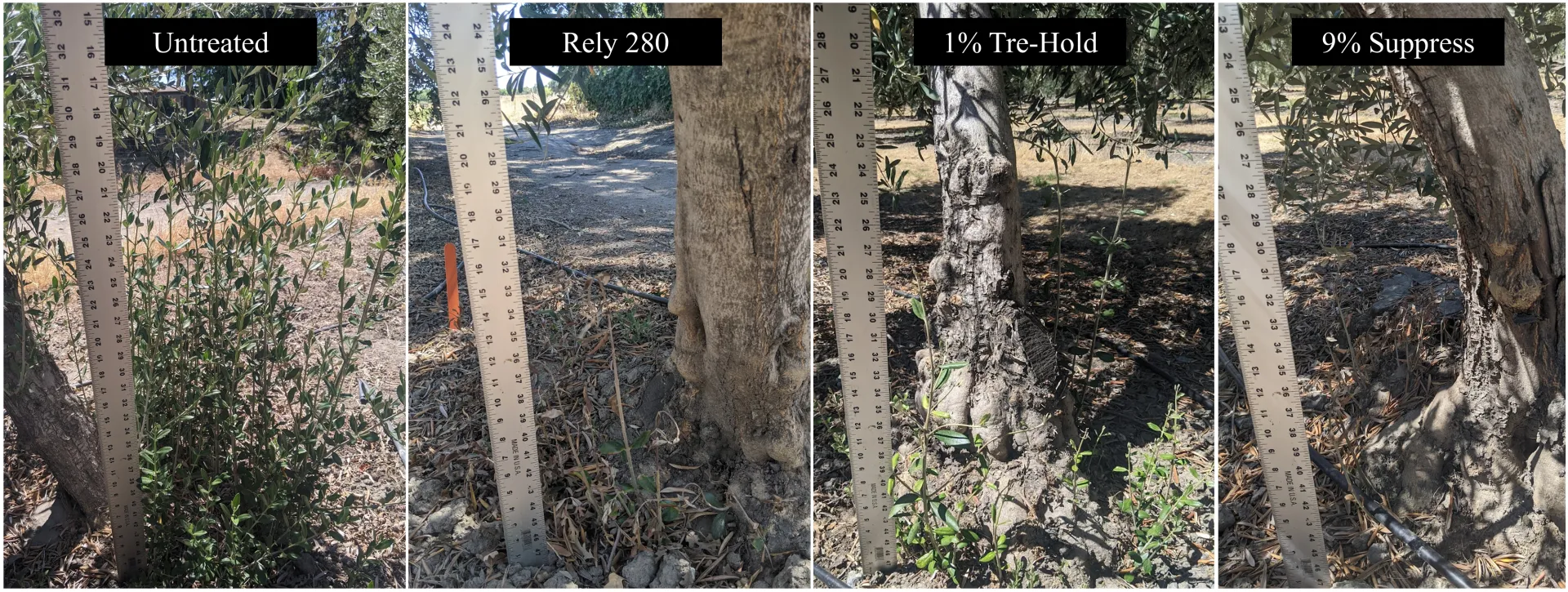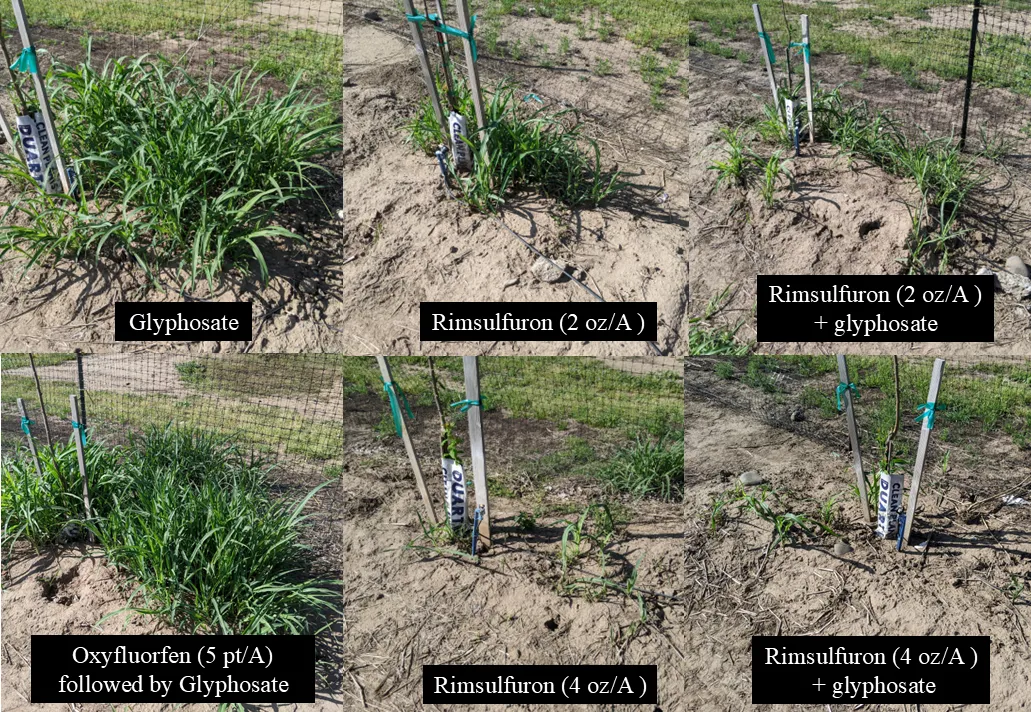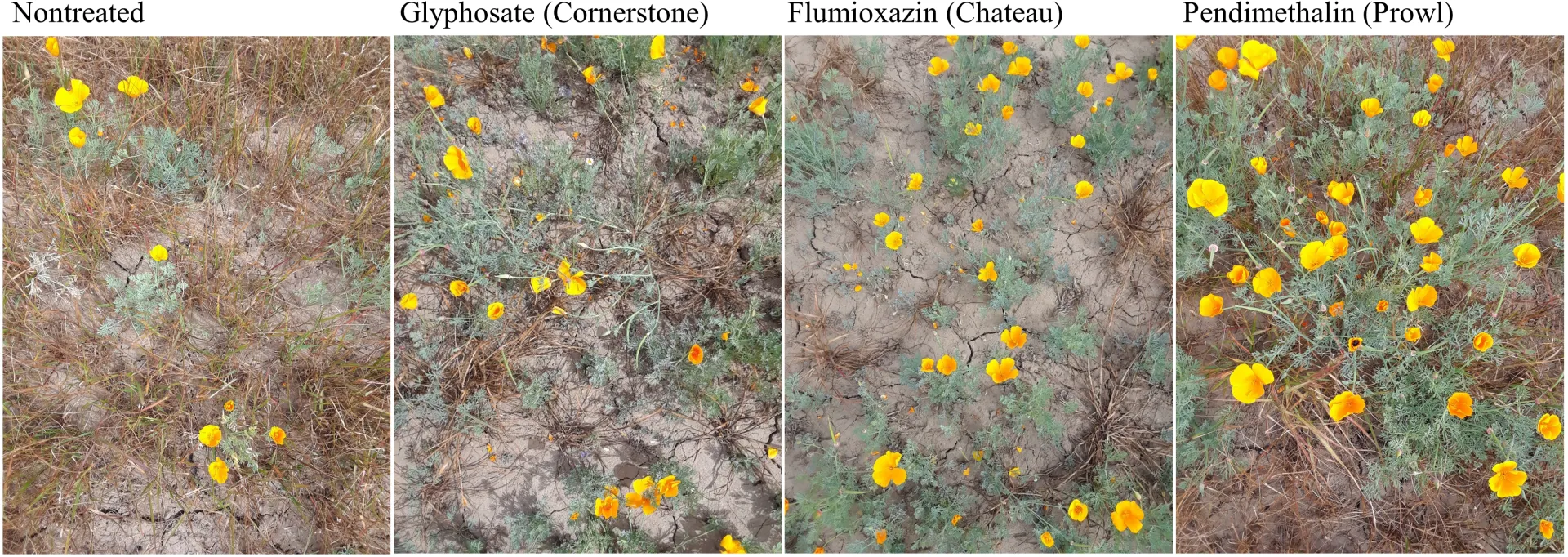Olive sucker management: Herbicide efficacy trials
Hand cutting olive suckers is costly and time consuming, so many growers are attempting chemical pruning as their method of choice for sucker control. But how effective are the available chemicals? Two trials in Tehama County have provided preliminary data addressing this question. Tested chemicals include: Rely 280, Suppress (organic herbicide), Tre-Hold (plant growth regulator), Venue, Shark, and various combinations of each of these. All treatments were broadcast (no spot treatments) to suckers between 5 and 12 inches tall in both spring and summer. Spring treatments were applied to the growth from the previous year and summer treatments were applied to current-season's growth.
Caution: SUPPRESS is not yet labeled for use on suckers in California. Always check your labels to confirm use patterns are legal.
Main takeaways from the spring trial:
- Rely was by far the best option, with Shark as a close second. Tank mixes did not improve Rely efficacy.
- Suppress and Tre-Hold were not effective on the older suckers tested in this trial.

Main takeaways from the summer trial:
- Rely was again the best option tested, and tank mixes did not improve efficacy.
- Suppress (9% concentration) and Tre-Hold (1%) were the second and third best treatments tested in this trial. They performed much better in the summer than they did in the spring trial. I assume this is because the summer suckers were less hardened off, while the spring suckers were much tougher.
- Venue and Shark were relatively ineffective at this application timing, but may be better as spot treatments, rather than broadcast.

Watch out for trunk injury if you use Rely in olives, and make sure the spray only contacts mature, brown bark.
Can herbicides affect established johnsongrass populations pre-emergence?
A series of research trials conducted between 2024 and 2025 in Shasta and Tehama Counties have provided some interesting evidence that yes, some herbicides can affect established johnsongrass populations pre-emergence. Rimsulfuron (Matrix, Hinge, Revolt, and others) applied in early March to old, well established johnsongrass populations in walnut and prune orchards resulted in an approximately 50% reduction in weed coverage, relative to Roundup on its own. At the time of application, most johnsongrass shoots hadn't broken the soil so the control I saw was primarily from soil activity with this herbicide. There was also plenty of rain after applications to water in the herbicide and promote its soil residual activity.
Further resources addressing my research on this topic:
https://www.sacvalleyorchards.com/prunes/management-of-johnsongrass-in-orchards/
https://www.growingthevalleypodcast.com/podcastfeed/johnsongrass25

UCCE Tehama explores new electrical weed control technology
This video is from a demonstration of electrical weed control in a Tehama County prune orchard, the result of a collaboration between UCCE Tehama and UC Davis. Electrical weed control is a promising technology that may be useful for weed management in perennial crops grown in California. This particular implement involves a PTO-powered generator that sends high-voltage electrical current to the applicator device, which runs along the ground and contacts emerged weeds. The current should run through the green, water-filled, leaves and stems and possibly some distance down into the roots. The treatment bursts plant cells, resulting in rapid wilting. You can see the heat increase trailing the path of the applicator in the thermal video.
Weed management is essential when seeding pollinator habitat

"Soil compaction and perennial weeds must be addressed to have a successful pollinator habitat planting. Our research shows that certain preemergent herbicides can improve habitat establishment, but crop safety must be adequately established. This is especially true of different soil types and environments. In California’s Central Valley, pendimethalin has been seen to occasionally cause injury in poppy plantings, which is in contrast with this study. This may be due to different soil characteristics affecting toxicity to the emerging seedlings. Preemergent herbicides like pendimethalin can also be used at a delayed preemergent timing, waiting until just after seedlings emerge to apply the herbicide. This is possible only if the herbicide has no post-emergent activity on the treated crop."
Full article:
Weed Science & Agronomy Advisor; Ryan Hill

Welcome to Ryan Hill, our new Weed Science and Agronomy Advisor, for Tehama, Shasta, and Glenn counties.
Ryan's education and professional background is in weed science and plant genetics. He received a B.S. in Biology from George Fox University in 2014 and an M.S. in Plant Breeding and Genetics from the Department of Horticulture at Oregon State University in 2020. Following graduation with his masters, he took on a faculty research assistant role in Dr. Marcelo Moretti’s perennial weed science lab at OSU. In this role he conducted weed research in horticultural crops including several projects on herbicide-induced crop injury. Additional projects included sucker control in hops and hazelnuts, pollinator habitat establishment with pre-emergent herbicides, and electrical weed control of Italian ryegrass.
He is working to identify priorities for his research programing, getting to know the local farmers, supporting your programs and needs.
We encourage you to reach out to Ryan with ideas, requests, or questions relevant to weed science or agronomic crops. Or to just say "HI" and welcome him to our community.
You can contact Ryan at rjahill@ucanr.edu or (530) 527-3101.

